Half Ironman right before a Full Ironman…
Ironman 70.3 Waco was meant to be my “status check” race because it was scheduled two weeks before my A-race, Ironman Florida. Initially, I thought that two weeks would be too close together, but after talking with Johnny and some of my Pearland Triathlon Racing Club mates, I realized that I was wrong. Racing a half-Ironman two to three weeks before a full distance Ironman is actually useful and fairly common.
When one is 4-6 weeks from a full Ironman, the training sessions are longer than the distances of the 70.3 race. So, my body should have no problem absorbing the effects of a half-Ironman. Once I became comfortable with the two races so close together, I realized that Waco would be a status-check, and that I could use the results to fine-tune any deficiencies or execution failures before heading off to Florida.
Surprisingly, the race director decided to hold a full-distance Ironman the day before the Waco 70.3 race. Having back-to-back events resulted in my race starting at 12:30 pm instead of the typical 7 am time. However I didn’t expect the delayed start to be an issue. Instead, I assumed it would be more convenient since we would be able to sleep longer and take our time getting ready.Pre-race activity
After checking in on Saturday afternoon, I organized my gear, took the customary Flat Stanley photos then divided things into the bike and run bags, and chilled with my family. Unexpectedly, I slept very well Saturday night. Typically, I’m anxious about oversleeping and missing the start of the race. After setting up my transition area, I saw several folks that I knew and a few that I’d connected with on Instagram. We were all pretty relaxed and feeling ready. I noticed how much more enjoyable races are now that I’ve made connections with people. Having familiar faces on the course is like a mental booster shot.
The walk from the transition area to the swim start was a little more than a mile. Once there, I donned my wetsuit. Although I didn’t want to wear it too soon, I was also nervous about putting it on correctly. By the time we were told to get in line it was 11:45-12 pm-ish, and was already sweating profusely.
Once we moved into the corral, I noticed that my heart rate had gone from the 80s to >130 bpm. I became concerned because I was overheating, but assumed that I’d cool down quickly once I got into the water since it was 76°, aka “wetsuit legal”.
The trouble begins.
I entered the water with the 30-35 minute finishers group. The first half went very well, I maintained my desired pace fairly easily. Then about 75% through the swim my calf muscles began to cramp. To try to prevent this from becoming severe I stopped kicking, but it was too late. One by one my leg muscles began cramped up. I swam for a while but the pain became too intense so I stopped and stretched my calf muscles. While pulling my calfs my hamstrings began cramping. Then, I knew that I was in trouble. I decreased my effort to reduce the chance of any further cramping and just focused getting out of the water and continuing with the rest of the race.
Once out of the water I immediately felt nauseous. As I ran up the hill through the crowd and into transition, the feeling became more intense so I went straight to the “honey pot” where I began violently throwing up. Afterward, my stomach felt as if it had turned inside out and I felt exhausted. Feeling weak I sat in the corner to gain my composure.Delaying the inevitable
After returning to my bike, I was able to get geared up and leave transition. Honestly, I had some mental reservations about continuing the race because my hands were shaking uncontrollably and my legs wouldn’t stop cramping. The pain was quite intense, but I was determined to continue. I wanted the medal and t-shirt so quitting was not a viable option at that point.
Fairly soon into the ride, I realized that I wasn’t able to hold consistent power or ride in a straight line. I began questioning what to do (quitting became a consideration). I opted to continue, but ride more slowly and wait for my body to settle down. I was also thinking that stopping before I got too far into the back roads of the bike route and the heat of the day would be the wisest choice. However, I didn’t want to accept that as an outcome. I showed up to race, so I was 100% driven to complete it.
Around mile 8, I was feeling flat while the shaking and cramping were still very intense, so I pulled to the curb and sat down. I was still focused on allowing my body to settle, so I could get back into the race. Many of the passing cyclists asked if I was ok and I responded with a 👍🏾. However, after what felt like 10 minutes, I knew that I needed to stop. This race was not my A-race, it was one that I was doing to test myself as I final preparation for Ironman Florida. The reality was that I could finish it but at a great physical expense. The recovery required would very likely extend into the week of Ironman Florida and result in my inability to give a full effort there. I was not willing to make that sacrifice, so I decided to call it quits while sitting on the curb.
A group of spectators stopped their car and asked if I needed anything. I responded that I was done with the race and waiting for the SAG (support) vehicle so that I could return to the start line. They offered to take me (I was very sweaty) and my bike, so I hopped in their vehicle, and off we went. As I went into the transition area, I felt like I was doing the walk of shame. I even put the visor back over my face so no one could take photos of my face. I felt silly thinking that way, but that’s what it was in the moment.After calling my wife and coach to let them know what happened, I sat with my bike for a few minutes. Was I really comfortable with quitting? I’d never done that. Then, as I began to pack my gear I spoke with several others who had been labeled DNF because they missed the swim cut-off time. After talking with them I didn’t feel so alone and embarrassed. The shaking had stopped, but my legs were still cramping. I needed hydration, electrolytes and to get off of my feet.
After taking time to reflect and note what errors I made going into the race, I became very comfortable with my decision to stop racing. I have had many experienced triathletes send me messages agreeing with my decision and sharing their experiences with quitting or not being able to finish a race, helping me to understand that it’s part of the process and journey of growth and improvement.Some important bits of information are listed below:
- Water temp 76° – very close to ambient air.
- Ambient temperature 78° with 90% humidity and a 73° dew point. – lots of moisture in the air, difficult to cool off.
- Only had about 24-36 oz fluids the day before the race. – woefully under-hydrated.
- Pre-race meal – was normal except for the UCAN and Athletic Greens.
- 3 coffee cups of oatmeal with apricots, 1 pack Athletic Greens & 1 cup of coffee with 20g collagen 3 hours prior.
- In transition, 1 pack of UCAN 1h30min prior to the swim start
- 1 SIS gel 30 min prior to the swim start – This is typical, but probably became an issue without proper hydration.
- 1 bottle (16oz) of water before the swim start. – This is an insufficient quantity of water while waiting and sweating in a wetsuit at 12 pm.
Some of the changes that I’ll take with me going forward:
(1) Don’t wear a full-sleeve wetsuit in water warmer than 70°, and
(2)Don’t break the nutrition routine until after completing the race. Finally,
(3) Where practical, avoid races with mid-day starts.


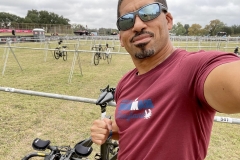
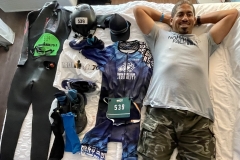
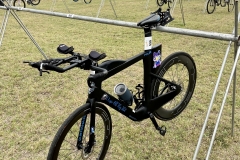
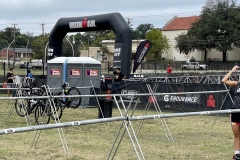
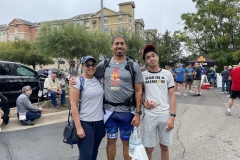
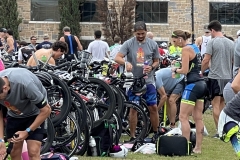


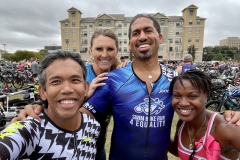
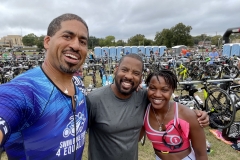
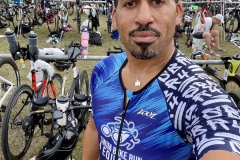
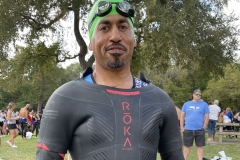
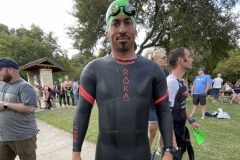
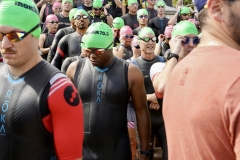
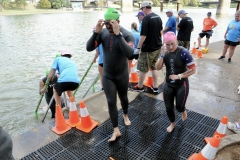
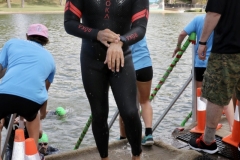
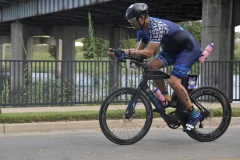
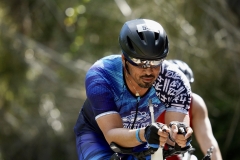
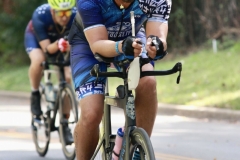
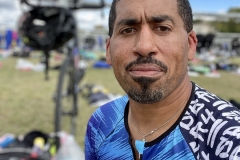




Trackbacks/Pingbacks